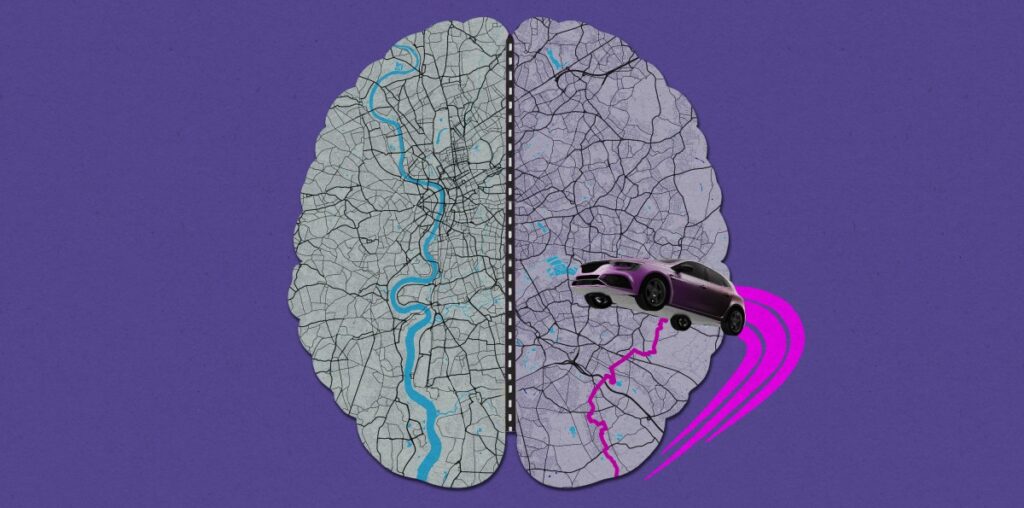Figuring out why the model behaves as it does tells Wayve what kinds of scenarios require extra help. Using a hyper-detailed simulation tool called PRISM-1 that can reconstruct 3D street scenes from video footage, the company can generate bespoke scenarios and run the model through them over and over until it learns how to handle them. How much retraining might the model need? “I cannot tell you the amount. This is part of our secret sauce,” says Rus. “But it’s a small amount.”
WAYVE
The autonomous-vehicle industry is known for hype and overpromising. Within the past year, Cruise laid off hundreds after its cars caused chaos and injury on the streets of San Francisco. Tesla is facing federal investigation after its driver-assistance technology was blamed for multiple crashes, including a fatal collision with a pedestrian.
But the industry keeps forging ahead. Waymo has said it is now giving 100,000 robotaxi rides a week in San Francisco, Los Angeles, and Phoenix. In China, Baidu claims it is giving some 287,000 rides in a handful of cities, including Beijing and Wuhan. Undaunted by the allegations that Tesla’s driver-assistance technology is unsafe, Elon Musk announced his Cybercab last week with a timeline that would put these driverless concept cars on the road by 2025.
What should we make of it all? “The competition between robotaxi operators is heating up,” says Crijn Bouman, CEO and cofounder of Rocsys, a startup that makes charging stations for autonomous electric vehicles. “I believe we are close to their ChatGPT moment.”
“The technology, the business model, and the consumer appetite are all there,” Bouman says. “The question is which operator will seize the opportunity and come out on top.”
Others are more skeptical. We need to be very clear what we’re talking about when we talk about autonomous vehicles, says Saber Fallah, director of the Connected Autonomous Vehicle Research Lab at the University of Surrey, UK. Some of Baidu’s robotaxis still require a safety driver behind the wheel, for example. Cruise and Waymo have shown that a fully autonomous service is viable in certain locations. But it took years to train their vehicles to drive specific streets, and extending routes—safely—beyond existing neighborhoods will take time. “We won’t have robotaxis that can drive anywhere anytime soon,” says Fallah.
Fallah takes the extreme view that this won’t happen until all human drivers hand in their licenses. For robotaxis to be safe, they need to be the only vehicles on the road, he says. He thinks today’s driving models are still not good enough to interact with the complex and subtle behaviors of humans. There are just too many edge cases, he says.
Wayve is betting its approach will win out. In the US, it will begin by testing what it calls an advanced driver assistance system, a technology similar to Tesla’s. But unlike Tesla, Wayve plans to sell that technology to a wide range of existing car manufacturers. The idea is to build on this foundation to achieve full autonomy in the next few years. “We’ll get access to scenarios that are encountered by many cars,” says Rus. “The path to full self-driving is easier if you go level by level.”
But cars are just the start, says Rus. What Wayve is in fact building, he says, is an embodied model that could one day control many different types of machines, whether they have wheels, wings, or legs.
“We’re an AI shop,” he says. “Driving is a milestone, but it’s a stepping stone as well.”

